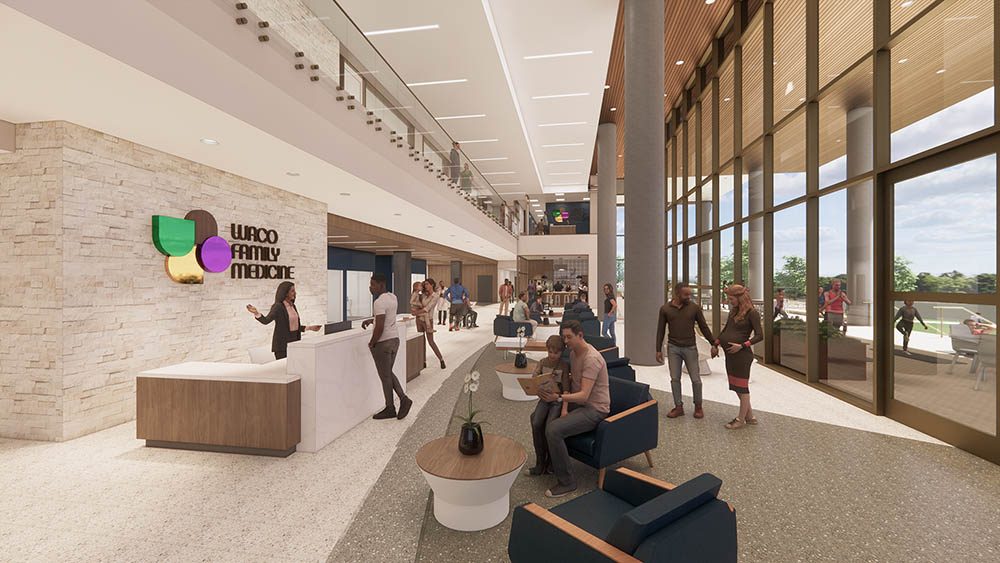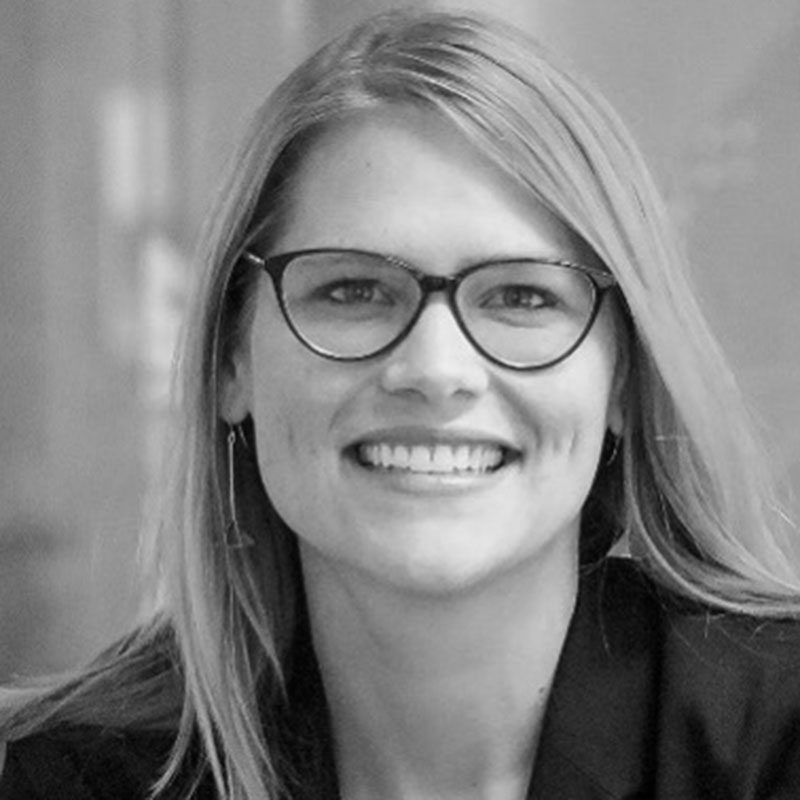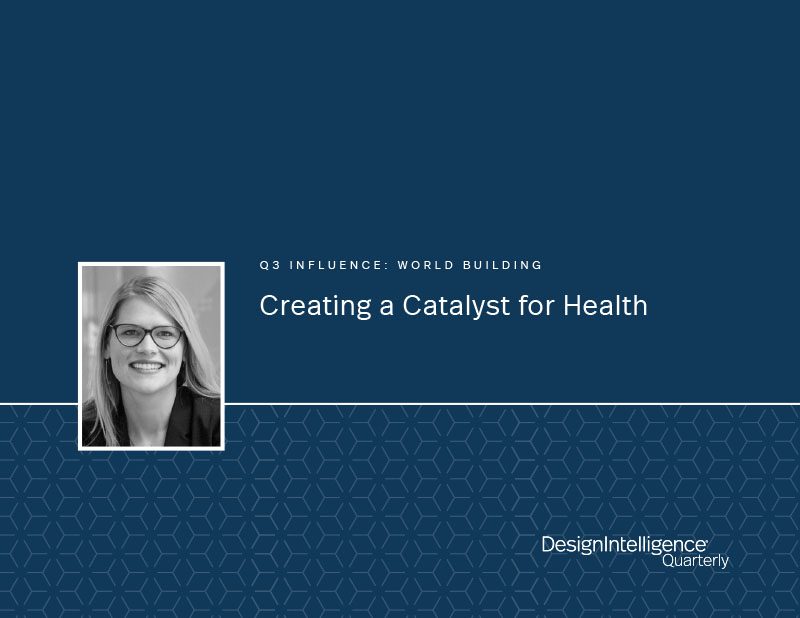Creating a Catalyst for Health
by Erin Peavey
Architect and Design Researcher, HKS
July 6, 2022
HKS’ Erin Peavey shares a story of transformation
The sun beat down on our stiff black suits in the blistering midday Texas summer. Heat radiated from the sea of asphalt that surrounded us.
“Where is the entry?” John wondered aloud, shading his eyes with his hand. I looked out and saw a mother walking slowly across the sweltering blacktop through the sea of cars. She was graciously leading her small child with bags in both hands, walking past us with a stoic smile and nod.
In that moment, our team shared a singular thought: “We’ve got to do better for them.”
We were called to interview for the new Waco Family Medicine clinic, a clinic that encapsulates the best and hardest parts of the Texas city. Inside were some of the smartest, most dedicated and compassionate clinicians and administrators I’ve ever met. Awaiting these experts was a patient population full of life and vibrancy but mentally and physically overwhelmed from the realities of their lives, some experiencing the lowest end of the socioeconomic ladder.
Life is hard on these members of our communities. I had come to appreciate this through seeing my father’s work as a doctor working at a clinic for people without insurance and my mother’s work as a counselor for children harmed by abuse, addiction and systems structured against them. I had been spared these hardships most of my life. In their practices, almost everyone Mom and Dad served had comorbidities, a word we in the clinical realm use to describe the many chronic diseases, conditions and contexts working against them within their own bodies.
Each of these visitors had to struggle to make their journey to the clinic on this sweltering summer day. Many took the bus, having to take a day off from manual labor jobs and lost wages just to fit in a visit for their asthma or diabetes medications or join other young mothers for their monthly checkups.
What we know about health grows daily. Health is not just clinical care. Rather, it includes all the social determinants of well-being — things like physical activity, education and access to nutritious foods that shape health. As architects, we also know that the places we shape, inside and out, citywide and room-deep, impact individual access to healthy lifestyles.
One of the many things that attracted me to Waco Family Medicine as a client and project was their commitment to using this once-in-a-lifetime investment in their infrastructure to have a lasting transformational impact on the equity and health of their community.
In the months that followed, as we began to envision the new facility, we met not only with the senior administrators who dedicated their lives to this community, but also with the patients who frequented its doctors and the community members who attended its health fairs.

Photo Credit: HKS, Inc. Waco Family Medicine. Waco, Texas.
What we discovered was a resounding collective desire: They all wanted a catalyst for creating a culture of health, one that provided and transcended basic clinical care. What they wanted was a place of community, a place for children to play, pick vegetables and take yoga classes with their friends — and, yes, to also get their vaccinations and prescriptions.
When our design team was finished, what our clients got was a vibrant health hub on park grounds. Beginning with a simple “what if” question, our team of world builders transformed the sea of concrete into a welcoming green space that could host community events, a place that offered a safe space to play for local kids, all while modeling health through culinary demonstrations, vegetable gardens and workout classes. Through simple dialogue and our empathic listening, our clients got integrated medicine, mental health and more.
Perhaps the most important lesson of this short story is as an example to all of us of how we can use the built environments we design and build to create cultures of health. Waco Family Medicine’s vision called for a greater health impact in their community, and we listened.
What is one thing you could integrate into your designs today to support health for every person that walks into the buildings you design?
Design is never neutral. It either harms or helps health.
What legacy and influence will your designs have in the worlds you build?
Erin Peavey, AIA, WELL AP, LSSYB, EDAC, LEED AP BD+C is an architect and design researcher at HKS. Erin’s passion for creating environments that support health, happiness and well-being drives her evidence-based, user-centered approach to design. In her leadership role at HKS, she helps integrate research and practice to advance design for health, combat loneliness and foster resilience across the globe. Erin is an industry scholar with the Cornell Institute for Healthy Futures and is a widely sought-after author, speaker and facilitator. Her podcast, Shared Space, explores how architecture and design can help us live healthier, happier and more connected lives.


